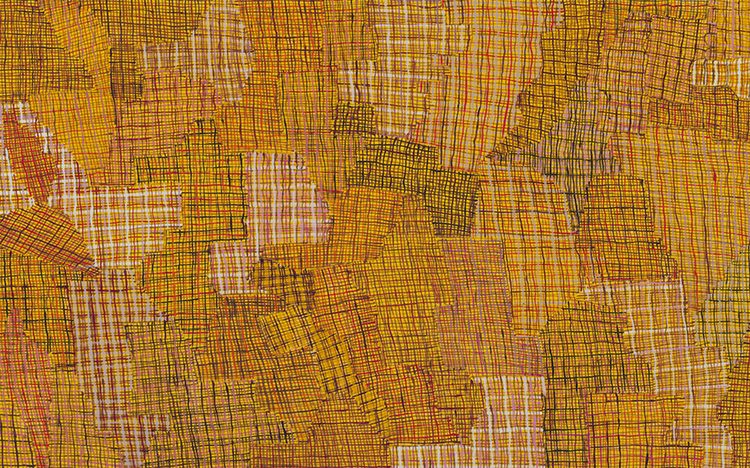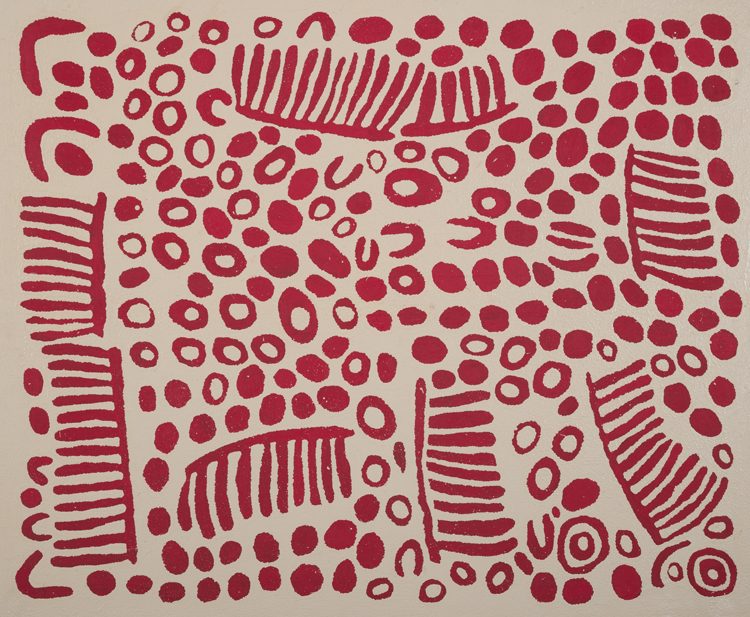
Regina Pilawuk Wilson, Syaw (Fishnet), 2014, Synthetic polymer paint on canvas, 47 1/4 x 78 3/4 in. Collection of Debra and Dennis Scholl © Regina Pilawuk Wilson, courtesy Durrmu Arts, Peppimenarti. Photo: Sid Hoeltzell
“My grandfather and grandmother used to make big fishnet, before Europeans came to Australia. We call it syaw. They used to make four or five and put them in the water. I forgot the stitch because the missionaries took us in, and my grandparents died. My big sister told me to do the story on painting for our children and grandchildren, so they can remember what our ancestors used to do a long time ago. She drew it on the sand, on the dirt, and told me to paint it. I’ve got to paint the story on the canvas. It’s like our history.”–Regina Pilawuk Wilson
This work is on view in Marking the Infinite: Contemporary Women Artists from Aboriginal Australia through September 9, 2018.


